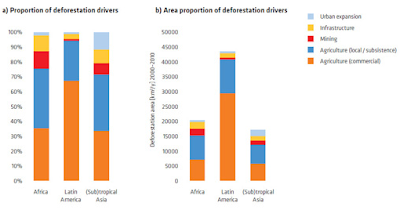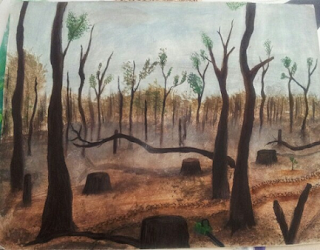It’s never easy explaining to anybody what you do at
university, regardless of what you study. When I studied Mathematics for my bachelor's degree, people would always ask what that entailed, and would then
proceed to get incredibly confused or uninterested when I tried to explain.
This has lessened since studying Environmental Modelling, probably because the
environment is something that almost all of us can identify with, or
at least respect its importance (except maybe Donald Trump and the Tories). However,
I still get asked the same question all the time: “what actually is environmental
modelling?”
 |
| Source: http://memecrunch.com/ |
A model, in general, is a
simulation of a real-life system for the purpose of understanding that system
better. For example, you can use models to forecast future behaviour (without
having to wait for time to unfold), and develop projections based on changes in
the system (without having to tamper with the real-life system). However, to do this first requires assumptions about our system (parameters), boundary and initial
conditions, and an understanding of the model and inter-connected relationships
within it. Then, we can construct a model using field observation, laboratory
experiments, mathematical equations, statistics, logic, and computation to best
predict the system in the simplest way necessary.
In an environmental modelling
context, these systems are highly variable. The whole Earth as a system is used
for many different models, such as weather forecasting, fluctuations in sea
surface temperatures and climate change. Alternatively, some models can focus
on specific localised regions, like ecological models/population dynamics, hydrological
systems, etc. We can even use models to simulate livestock systems!
But, why should we do that? Well, instead of using trial
and error on the parameters of the model to increase productivity or predict
environmental damage, models allow us to use computers, which is more
cost-effective, faster and can avoid unnecessary environmental damage. However,
predicting systems is incredibly difficult, which can sometimes make
environmental models fairly unreliable. To avoid them going pear-shaped, we
need to highlight the most vital parameters in our model and portray them as
accurately as possible.
 |
| Source: http://www.cliparthut.com/ |
Here are some examples of
livestock production models:
Global Livestock Environmental Assessment Model (GLEAM)
This model, produced by the FAO, does
exactly what it says on the tin: assesses the environmental impacts of global livestock production, which include greenhouse gas emissions, land use,
land degradation and forestry, feed, water use and species interaction, as well
as determine possible adaptation and mitigation strategies on a regional and
global scale.
The main elements of the model are
as follows:
- Systematic, global coverage of meat and milk
from cattle, sheep, goat and buffalo, meat and eggs from chicken, and meat from
pigs.
- Spatial distribution models of livestock,
climate data and feed yields to identify driving factors, environmental
consequences and mitigation strategies
- Approximations of carbon dioxide, methane and
nitrous oxide (GHG emissions) at each stage of production, and from
fermentation and manure management
The outputs of the model are:
- · Spatial distribution and quantity of cattle,
sheep, goats, buffaloes, chickens and pigs
- Amount and management of manure
- Volume, composition and quality of feed
- Emissions emitted at each stage of production
- Commodities produced by livestock
Integrated Model to Assess the Global Environment (IMAGE)
European Livestock Policy Evaluation Network (ELPEN)
The purpose of ELPEN is to measure
or predict the outcomes of policy change in the livestock industry. The
model incorporates bio-geographical data (including climate, land cover, soil,
water, topography), statistical data, economic, social, environmental and
technical features of livestock systems, to produce conclusions based on
social, economic and environmental effects of policy change.
Livestock Development Planning System, Version 2 (LDPS2)
The main features are:
- Calculating the size, composition and feed of
livestock herds needed for a given demand of livestock products, including
meat, milk, eggs, skin, wool, manure and power supply
- Measuring the growth of herds to find the “growth
constraint” to meet demand
- Compares these estimates with the amount of
resources available
 |
| Source: http://images.all-free-download.com/ |

















